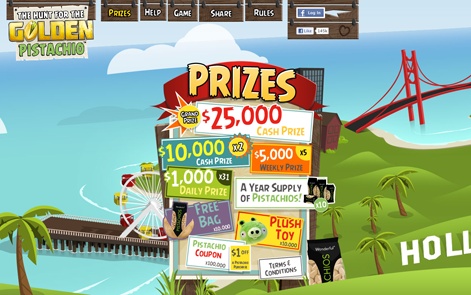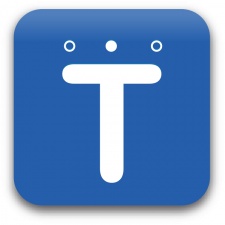Shawn Aguilar is digital marketing manager at mobile advertising exchange TapSense.
Every mobile game developer wants to attract big brand advertisers, but how?
Build a direct sales team? Develop a fancy media kit? Get the right technology in place? These are all good answers, but they're just tactics.
To really succeed with brand advertisers, mobile game developers need a holistic strategy for their monetization efforts as well.
While there's no silver bullet when it comes to attracting high quality advertisers, we've put together recommendations in four key areas that mobile game developers should address.
Premium inventory at scale
Your mobile game needs to have significant reach to create the scale that is attractive to brands.
Let's assume that the average mobile brand campaign budget is $100,000, spent over a one month period. At a $1.00 CPM, you would need a minimum of 100,000 premium ad impressions a month in order to deliver on this campaign.
But having the premium inventory available is where most mobile game developers struggle.
An at-scale mobile game will throw off millions of impressions, but very little of that is of high quality.
The best approach is to segment - clearly define your premium inventory.
Brand advertisers consider a premium impression to be an above the fold impression on the startup screen, home screen, or logout screen only. Interior pages, search results, forums, user profiles, and other pages with fewer views are classified as remnant inventory.
In many mobile games, however, a full-screen interstitial is considered a premium impression even if it's not the startup screen. Very few mobile games have many full-screen placements.
For most mobile game developers, the best approach is to segment inventory into at least two tiers - clearly define premium inventory and repackage the remaining as remnant inventory.
For the remnant inventory, segmentation by content type or demographic can make it more attractive and command a better price.
Developing across multiple platforms, including iPad, iPhone, Android and mobile web, is one way to increase the volume of premium impressions. Another is to carefully evaluate the user experience and try to find opportunities to add strong performing placements.
Feature high quality content
Most established brands are very particular about where their advertising appears. They are looking to have their ads seen within games that are "brand safe."
These advertisers will avoid games with strong violence or adult language and content. Games like these will find advertisers, but not the big names everyone wants, like Nike, Coke, or Disney.
Words With Friends, Candy Crush, and Angry Birds are perfect targets for brand advertisers, because they have scale and great content.

This creates a big opportunity for independent games in a specific niche like role-playing, puzzle-based titles, episodic adventures, or platformers.
Brand advertisers are actively looking for impressions in those categories. If your content is tasteful, highly targeted, and relevant, you don't need to have a lot of inventory to attract big brands.
Mobile games using texting apps, social networks, and other types of user-generated content are not considered premium. In fact, these impressions are penalized for being extremely low quality.
They carry significant risk for advertisers, as the mobile game developers can't guarantee the relevancy or context of the ad.
Almost everyone has seen strange pairings of ads from keyword recognition. A story about a serial killer, featuring an ad for knives. Or a description of a car accident triggering an ad for an auto brand.
For many ad executives, just one ad out of context could be a death sentence for a brand.
Have a unique and differentiated offering
Brand advertisers are always searching for interesting ideas and opportunities. Going beyond the standard banner ad is a great way to attract them. Rich media, video, and other unique display formats are all very attractive.
Going beyond the standard banner ad is a great way to attract brands.
But be careful. If the opportunity is too custom, you run the risk of escalating implementation costs, which increases overhead and reduces margins. Also, these formats can become a barrier to increasing the user base, as they tend to be intrusive.
Native advertising is a new approach in mobile and has been very successful for direct marketing. Some brands have embraced it, and the combination of native with video looks very promising.
Ultimately, its how native ads are implemented in your mobile game will determine if it is appropriate for a given brand.
Offering unique data for reporting and targeting is another way a mobile game developer can differentiate. Advertisers greatly value gender targeting, interest targeting, age targeting and other types of audience segmentations.
If you can collect this or easily infer this information about your users, it can be very valuable. Going beyond CTR and offering additional reporting information is also interesting for customers. Consider how you can provide advertising engagement metrics such as interaction time or number of shares.
Develop your brand as a mobile game developer
Brand advertisers are attracted to other brands. Building your brand as a mobile game developer will work wonders when trying to attract brand dollars from advertisers.
While it may sound simplistic, it's true. Well-known mobile titles like Angry Birds, Candy Crush Saga, and the Where's My Water? series have established their brands and now command the majority of the revenue.
Even with the explosion of options in the variety and abundance of mobile games, well-established titles remain the preferred vehicle for most brand advertisers in mobile.
If you want to attract the best brands and advertisers, you will need to drink your own champagne. There is no better way to establish trust with big brands than to become a big brand in your own right.





















